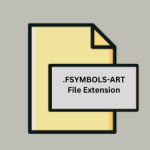.AIS File Extension

ACDSee Image Sequence File
| Developer | ACD Systems |
| Popularity | |
| Category | Raster Image Files |
| Format | .AIS |
| Cross Platform | Update Soon |
What is an AIS file?
The .AIS file extension is associated with ACDSee, a popular image viewer and organizer software.
Specifically, .AIS files are used to store image sequences within ACDSee, allowing users to organize and view series of images seamlessly.
This article explores the origins, technical details, advantages, disadvantages, conversion methods, and how to open .AIS files across different operating systems.
More Information.
The .AIS file format was likely introduced to cater to the growing demand for organizing and viewing image sequences seamlessly.
With the proliferation of digital photography and the need for efficient image management tools, ACDSee provided a solution that allowed users to organize and play back sequences of images without relying on complex video editing software.
Origin Of This File.
ACDSee, developed by ACD Systems International Inc., is renowned for its robust image management capabilities.
The .AIS file format was introduced to facilitate the management and viewing of sequences of images, such as time-lapse photos or animations, within the ACDSee software ecosystem.
This format enables users to group and navigate through related images efficiently, enhancing workflow for photographers, designers, and multimedia creators.
File Structure Technical Specification.
.AIS files are structured to store metadata and references to a series of images. The exact technical specifications can vary based on the version of ACDSee and the intended use case. Typically, an .AIS file contains:
- Metadata: Information about the sequence, such as frame rate, resolution, and other relevant settings.
- References: Pointers or links to individual image files comprising the sequence.
- Configuration Data: Settings specific to ACDSee’s handling of the sequence, such as playback options and effects.
These components collectively enable ACDSee to manage and display image sequences effectively within its interface.
How to Convert the File?
Converting .AIS files to other formats or vice versa may require specialized software tools due to its proprietary nature. Here are the general steps for conversion:
- Export Function: Use ACDSee’s export function to convert .AIS sequences into common formats like JPEG, PNG, or GIF.
- Third-Party Converters: Utilize third-party software capable of reading .AIS files and exporting them into formats suitable for broader use.
Advantages And Disadvantages.
Advantages:
- Organizational Efficiency: Simplifies the management of image sequences, enhancing workflow efficiency.
- Integration: Seamlessly integrates with ACDSee’s broader suite of image management tools.
- Playback Control: Provides playback controls and settings tailored for image sequences.
Disadvantages:
- Software Dependence: .AIS files are primarily usable within ACDSee, limiting interoperability with other software.
- Complexity: Managing large sequences or integrating complex effects may require substantial system resources.
- File Size: Depending on resolution and sequence length, .AIS files can consume significant storage space.
How to Open AIS?
Open In Windows
- Install ACDSee on your Windows system.
- Double-click the .AIS file to open it within ACDSee.
Open In Linux
- ACDSee is not natively supported on Linux. Consider using compatibility layers or virtual machines with Windows to access .AIS files.
Open In MAC
- Install ACDSee’s Mac version or use a virtual machine to run Windows and install ACDSee there.
- Open the .AIS file within ACDSee.













